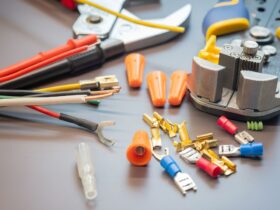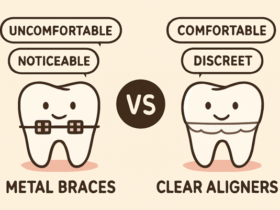Liposuction has become a go-to option for people looking to reshape certain areas of the body. It’s not about drastic changes—it’s about refining what’s already there. But what many don’t realize is how much of the outcome depends on the recovery phase.
Healing takes time, and it doesn’t happen overnight. Swelling, soreness, and pain all come into play. The process varies depending on the person, the treated area, and the amount of fat removed.
That is why people say whether you’re having the procedure done in a major metropolitan area or somewhere quieter, like Fort Myers, knowing what happens in the weeks after surgery can be very helpful. A smoother recovery begins with clear expectations, and this guide covers what to really expect, from day one through week six. So, keep reading to the end!
- Right After the Procedure
Once the surgery is over, most people feel groggy from anesthesia. According to the experts of liposuction in Fort Myers, the treated area is usually covered with compression garments to help reduce swelling. They recommend it should be worn for up to 6 weeks to help in recovery. It’s also normal to experience soreness and stiffness during the first 24 hours.
You’ll need someone to drive you home and help with basic tasks. Moving around should be limited, but very light walking can help with circulation. Pain medicine is usually prescribed to manage discomfort during this early period.
Swelling Starts to Peak
Swelling and bruising often get worse before they get better. That’s expected and nothing to be alarmed about. You may also feel tired and need more rest than usual.
Drains may still be in place depending on your procedure. They help remove fluid that builds up under the skin. Compression garments should stay on unless told otherwise by your provider. Gentle movement is encouraged, but it should be limited.
Week 1: Settling Into Recovery
By now, many people start feeling a bit more alert. Swelling and bruising remain, but they’re easier to manage. Most people can walk slowly around the house and handle small daily tasks without trouble.
If your job is not physically demanding, you might be able to return to work by the end of the week. Keep in mind, this varies.
Week 2: Light Activity Returns
During the second week, pain is usually less intense. You may feel soreness, but it’s manageable for most people. Bruising should start to fade, though swelling might still linger.
Some choose to go back to work fully by this point, depending on the physical demands of their job. It’s still not the time to exercise, lift heavy things, or stand for long periods. Your body is still healing under the surface.
Week 3–4: Early Results Begin to Show
At this point, you may begin to notice small changes in your body shape. The swelling will start to go down more noticeably, though some puffiness may still be there.
Your energy levels may return to normal, allowing you to handle more of your usual routine. Light walking is safe. However, gyms and workouts should still wait unless your doctor clears you.
This is the stage when experts performing liposuction say that people begin comparing progress photos and asking detailed questions about the healing process. Patients often check in with qualified surgeons who provide close follow-up care and clear guidance throughout the healing process.
Week 5–6: Steady Progress and a Clearer Shape
The treated area starts to take on its more defined look. While full results won’t be visible yet, you’ll likely notice a smoother shape and better contour.
Some people are cleared to resume light workouts by now, especially walking, yoga, or stretching. The compression garment might still be needed for a few hours daily, depending on the extent of surgery.
Small bumps or firmness under the skin may appear, which is normal and usually fades with time. This is part of the internal healing, not a problem with the procedure.
What’s Still Normal at This Stage
Some uneven swelling, numbness, or skin sensitivity can stick around for a few more weeks. These signs don’t mean something’s wrong—they’re part of how the tissue recovers.
Many people still see mild changes in the way their clothing fits, which can shift as the swelling goes down completely. Drinking plenty of water, eating nutritious meals, and staying mobile will support continued healing.
When to Contact Your Provider
Even with a smooth recovery, it’s important to know when to call your provider. Watch for signs like:
- Sharp or increasing pain that doesn’t improve
- Bright red skin around the incision
- Thick or foul-smelling fluid coming from wounds
- Fever or chills
These symptoms could point to an issue that needs attention. Providers expect to hear from patients during recovery and will want to support your progress.
Conclusion
Recovery from liposuction is a process, but it’s easier when you know what to expect. The changes are gradual, not instant, but the results can be lasting. If you’re exploring liposuction options, take time to learn from qualified providers and review their patient care approach. A smooth recovery starts with the right information—and the right surgeon.







